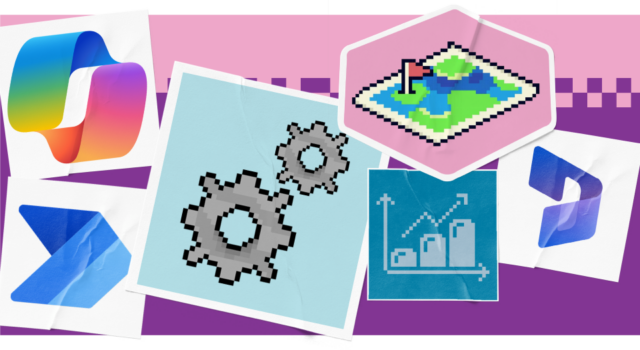Your IT operations are the backbone of your business. It affects how your teams work effectively and how you serve your customers. So, it’s crucial your IT consistently performs and enables your business to thrive.
IT service design was designed to help you to do exactly this. It’s a crucial component of Information Technology Service Management (ITSM), playing a key role in ensuring IT services are structured and tailored to meet the unique goals of an organisation.
By understanding and implementing effective IT service design, businesses can unlock new levels of operational efficiency and performance.
In this blog, we’ll explore what IT service design entails. We’ll also uncover why it’s so important for optimising functionality, reliability and user experience.
Understanding IT service design
IT service design is a systematic approach to defining and planning IT services that align with an organisation’s objectives and user needs. It will often be conducted by external IT providers offering outsourced support to your business. But it is possible to apply the principles internally.
As a fundamental stage within the globally-recognised ITIL (Information Technology Infrastructure Library) framework, it focuses on creating service strategies. The aim is to make these functional, sustainable and scalable. In fact, ITIL positions service design as one of its five core lifecycle stages, emphasising its importance in shaping services that deliver value across their entire lifecycle.
The primary role of IT service design is to ensure that IT services are planned meticulously before they are developed and delivered. By adhering to service design best practice (or working with providers that utilise service design), organisations can guarantee that their services are reliable, efficient and aligned with business expectations.
The core components of IT service design
IT service design, encompasses several key components that work together. In collaboration, these components ensure IT services are designed to meet both business and user requirements effectively:
- Service catalogue management. This process involves creating and maintaining an accurate service catalogue, which acts as a central source of information for all IT services available to users. It ensures clarity, transparency and accessibility regarding service offerings, leaving no room for miscommunication or confusion around processes.
- Service level management. Service level management focuses on defining, documenting and monitoring service level agreements (SLAs) between IT providers and their users. It ensures that services are delivered consistently with agreed-upon performance targets, for smoother processes.
- Capacity management. This involves forecasting and managing the capacity of IT services to ensure they can handle current and future demands without compromising performance. It ensures systems are scalable and adaptable to changing business needs.
- Availability management. Availability management is responsible for ensuring that IT services are reliable and available as required by the business. It focuses on minimising downtime and optimising service uptime to meet user expectations.
- IT service continuity management. This component ensures IT services can be restored swiftly in the event of a disruption. It involves creating and maintaining disaster recovery plans to minimise the impact of incidents on business operations.
- Information security management. Information security management is dedicated to safeguarding IT systems and data against threats. It ensures confidentiality, integrity and availability by implementing robust security measures in line with business and regulatory requirements.
- Supplier management. This process focuses on managing relationships with external suppliers to ensure that third-party services and products align with organisational goals and deliver value. It encompasses negotiating contracts, performance monitoring and maintaining strong communication channels.
By integrating these components into the service design process, you can establish a strong foundation for delivering IT services that are secure, scalable and aligned with business objectives. Ultimately, this drives success long-term.
The IT service design process
So, how are IT services designed to ensure performance? It involves a sequence of carefully orchestrated steps aimed at ensuring high-quality and reliable services that meet business requirements.
- Step 1. A thorough assessment of organisational needs, including identification of gaps and opportunities for improvement. This will involve engaging key stakeholders across the business to align service objectives with business goals.
- Step 2. Define the scope and specifications of IT services based on uncovered needs, including performance metrics, security protocols and compliance requirements.
- Step 3. Develop detailed service architectures and frameworks that ensure scalability and adaptability across the organisation while adhering to established best practices.
- Step 4. Prototype and test services under various conditions to validate efficiency, functionality and resilience. Address any shortcomings to create a robust, deployment-ready design.
- Step 5. Prepare documentation and training materials to equip users and IT staff with the knowledge needed for effective operation and management of the services.
- Step 6. Establish feedback loops to monitor ongoing service performance, incorporating insights for ongoing improvement to meet evolving business needs and technological advancements.
By following these steps, either with a service partner or internally, you can ensure that your IT perfectly fits your needs.
The business impact of effective service design
Effective IT service design is crucial for ensuring processes fit your needs and enable your business to perform. With this in place, you will experience benefits including:
- Enhanced efficiency and productivity: By aligning IT systems with organisational goals, teams can focus on strategic initiatives rather than resolving issues with outdated systems.
- Improved customer satisfaction: Seamless user experiences and faster response times foster trust and loyalty.
- Strengthened data security: Implementing robust security measures ensures sensitive information is protected, which is vital in industries like finance and healthcare.
- Cost savings: Optimised workflows and the elimination of inefficiencies result in reduced operational costs.
- Greater adaptability to change: Scalable IT services allow businesses to quickly adapt to evolving industry demands, such as responding to increased customer expectations during peak seasons.
- Competitive advantage: Businesses gain a strategic edge by offering superior IT-driven solutions and services.
By leveraging effective IT service design, organisations can build a foundation for long-term success and resilience amidst ongoing technological advancements.
IT service design in action
IT service design can be hugely beneficial for any organisation, ensuring your IT and business strategy work together in perfect harmony. When working with external IT providers – as the majority of business now do – it also ensures you’re getting maximum value from your contract.
If you want to find out what service design could look like for your business and how we do it for all our clients, download our service design eBook.





